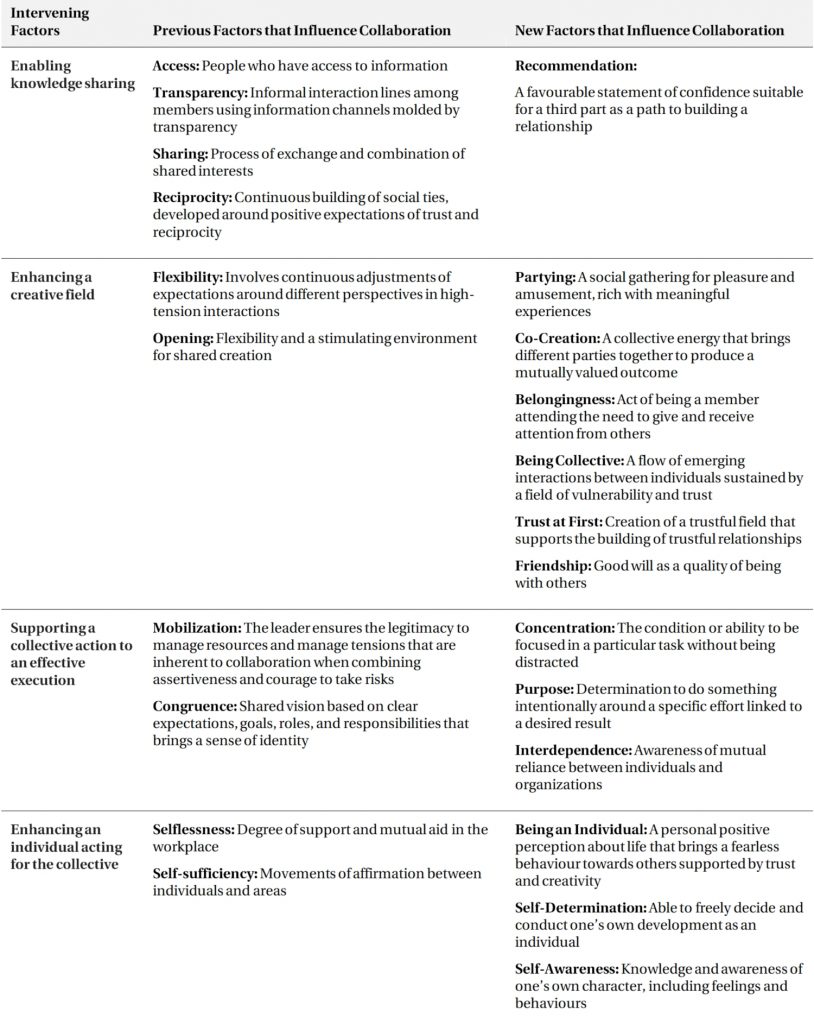
Factors that influence collaborative capability in co-working spaces
A recent study1 looks at the factors that foster collaboration in co-working spaces. Co-working spaces are shared offices offering operational efficiency, and, for the purposes of the study, are also defined as organisations that host and promote a collaborative capability.
The study was exploratory, involving semi-structured interviews in 14 co-working spaces located in six Asian countries – Thailand, Malaysia, Singapore, Indonesia, Vietnam, and Japan. A model comprising ten factors that had been identified in a previous case study was used as the basis of the initial interviews. From these interviews, new factors were added, and the model was refined and consolidated. The revised model was then used in the remaining interviews.
The model is based on four dimensions: enabling knowledge sharing, enhancing a creative field, enhancing an individual action for the collective, and supporting a collective action to an effective execution. Each of these dimensions aligns primarily with either “convenience sharing” or “community building” co-working types that have been identified in previous research:
- Convenience sharing co-working spaces tend to foster collaborative capability through knowledge sharing and effective execution.
- Community building co-working spaces tend to foster collaborative capability by enhancing a creative field and individual action for the collective.
These relationships are also illustrated in Figure 1.

Summary of factors that influence collaboration
Figure 2 shows the collaboration factors that had been identified in a previous case study (“Previous Factors That Influence Collaboration” column) together with the new factors identified through the interviews (“New Factors That Influence Collaboration” column).

Limitations and recommendations for further research
The authors acknowledge that the study was conducted only in Asian countries and in a relatively limited sample of co-working spaces. The results may have been different if the interviews were conducted in a different cultural setting, and there may also be differences between developing and developed countries within Asia. They advise that “Further studies could involve the application of the resulting model of two types, four dimensions, and underlying factors to coworking spaces in other regions to verify model validation and potential adaptations.”
Header image: Silicon Straights Co-working space, Singapore. Adapted from Singapore, Dec-2014 by Mitch Altman which is licenced by CC BY-SA 2.0.
Reference:
- Castilho, M. F., & Quandt, C. O. (2017). Collaborative Capability in Coworking Spaces: Convenience Sharing or Community Building?. Technology Innovation Management Review, 7(12). ↩






